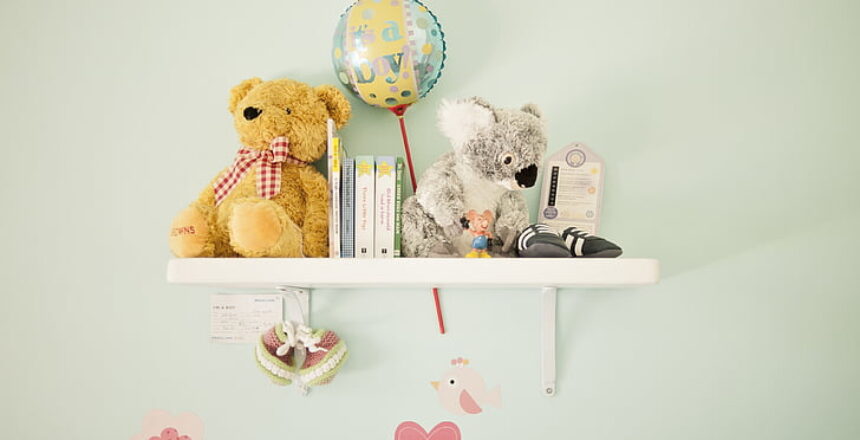Introduction
Let’s face it—curating the perfect nursery shelf can feel like walking a fine line between adorable Pinterest vision board and chaotic diaper explosion zone. You’re balancing practicality, style, safety, and let’s not lie—a little Instagram brag factor too. You want your nursery shelf to say, “Yes, I’ve got my life together,” even if you haven’t slept since your third trimester.
The truth is, your nursery shelf is more than just décor. It’s a hub. A helper. A little display of the love and care you’re pouring into this new chapter. So how do you create a nursery shelf setup that actually works, looks amazing, and doesn’t require an interior design degree (or a meltdown)? You’re in the right place.
And if you’re looking for a real-world, fan-favorite solution? The Homey Panda nursery book shelf is one of the most talked-about picks among modern parents. With its signature mini shelf design, it simplifies organizing, displaying, and rotating items as your baby grows—without sacrificing style.
Let’s break down exactly how to set your nursery shelf goals—and how to hit them like the multitasking superstar you are.
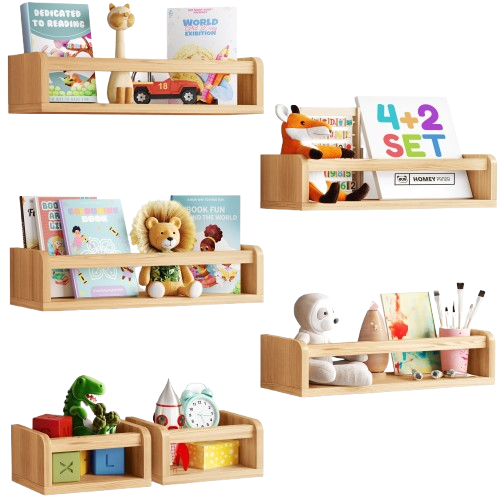
🧠 Mind Before Design: Setting Realistic Nursery Shelf Goals
Before you buy a single shelf bracket or start sketching layout ideas on a napkin, let’s get clear on one thing: what do you actually want your nursery shelf to do? The best-designed spaces start with intention. And in the early days of parenting, that intention needs to include one word above all: sanity.
🎯 Define Your Shelf’s Purpose
Is your shelf purely for display? For function? Or a mix of both? Be honest with yourself. If you’re a minimalist, you might want a sleek floating shelf with just a few cherished items. If you’re more of a visual organizer, you’ll probably want shelves that hold bins, baskets, and labeled essentials.
Here are a few goal-setting questions to ask:
- Do I need daily-use access or mostly decorative space?
- Will this shelf be touched, moved, or reached by little hands?
- Do I want it to evolve as my baby grows, or will it stay fixed?
Answering these now will help avoid frustration later—like realizing your picture-perfect setup has zero room for wipes and diapers.
🧩 Think Emotional + Practical
Your nursery shelf isn’t just wood and screws—it’s memory-holding real estate. That tiny framed ultrasound photo? It’ll live here. That first pair of shoes? Here too. Shelves are where the emotional and the everyday collide. So set goals that make space for both.
For instance, a great goal might be:
“I want one shelf for daily use, one for decorative items, and one for sentimental keepsakes.”
That’s the genius behind the Homey Panda nursery shelf—its mini shelf layout naturally encourages this kind of thoughtful division. Each section becomes its own little moment, which helps prevent clutter and chaos.
💬 Set Goals You Can Stick To
It’s easy to get swept up in nursery shelf inspo online, but let’s keep it real—you don’t need to recreate a showroom. Your shelf should serve you, not the other way around.
Keep goals simple and manageable, like:
- “I’ll rotate shelf items seasonally.”
- “I’ll keep the bottom shelf baby-friendly only.”
- “I’ll use labeled bins to make middle-of-the-night routines easier.”
Starting with clarity means you’ll make better design choices later—because you’ll always have a clear vision to come back to.
🎯 Planning With Purpose: 5 Questions to Ask Before You Touch a Wall
So you’ve got nursery shelf dreams, a saved Pinterest board, and maybe even a cart full of cute baskets. Hold up. Before you mount anything—or worse, drill unnecessary holes in your freshly painted nursery wall—let’s take a deep breath and ask the questions that’ll save you time, money, and possibly a relationship argument or two.
Planning with purpose means you’re not just throwing up a shelf to “see how it goes.” It means you’re building a nursery space that works for you, your baby, and the beautiful chaos ahead.
Let’s walk through five make-or-break questions that’ll guide your shelf setup like a pro.
1️⃣ How Tall Do I Want This Shelf to Be?
Height is more important than most people realize. Too high, and it becomes a useless décor-only zone. Too low, and it becomes a toddler climbing frame.
Golden rule:
- Daily-use shelves? Mount them between 4 to 5 feet from the ground.
- Decorative shelves can go higher—especially if you’re keeping precious items out of reach.
If you’re using a multi-tiered shelf system like the Homey Panda nursery shelf, its smart mini shelf design gives you a stacked layout that covers all your height needs—top for keepsakes, middle for function, bottom for baby-safe fun.
2️⃣ What Will Actually Go On It?
This sounds obvious until you’re mid-decorating and realize you never actually planned what you’d put up there.
Start by listing out the shelf’s categories:
- Daily items (lotions, burp cloths, swaddles)
- Toys and books
- Sentimental keepsakes (baby’s first shoes, framed art)
- Decorative touches (plants, name signs)
This will help you decide how much shelf space you actually need—and what kind of layout will work best.
Bonus tip: The Homey Panda mini shelves make this super easy by encouraging separation of categories. It’s basically built-in organization.
3️⃣ Will It Be Mounted, Free-Standing, or Part of a System?
Not all nursery shelves are created equal. Some are wall-mounted, some sit atop dressers, and others are part of furniture combos like bookcase/changing station hybrids.
Ask yourself:
- Do I want the shelf to be permanent or flexible?
- Will I move this shelf as the room evolves?
- Is wall-mounting safe in my rental/home?
For many, mounted shelves with anchoring hardware offer the best balance of style and security. The Homey Panda nursery shelf is lightweight but sturdy, and it’s easy to install (even if DIY isn’t your thing).
4️⃣ Will It Be Out of Baby’s Reach Now and in the Future?
Remember: babies become toddlers. Toddlers become climbers. A shelf that’s safe today might not be in six months.
Think long-term:
- Keep heavy items up high
- Secure anything below 3 feet with intentional baby-safe items
- Avoid glass or sharp-edged objects at any level they can reach
With something like the Homey Panda shelf, its sectioned layout makes it easy to assign zones by age access: baby books and soft toys on the bottom, fragile keepsakes up top.
5️⃣ Do I Need More Than One Shelf?
Sometimes one shelf just doesn’t cut it. If you’ve got lots of books, gear, or sentimental items you want to display, go modular. Multiple shelves can work beautifully in a gallery-style wall, above a dresser, or even stacked vertically.
You can also create “zones”:
- One shelf by the changing station
- One above the crib or reading nook
- One for rotating seasonal items or photos
This is where the Homey Panda nursery book shelf shines again—it’s compact, modular, and can be placed side-by-side or stacked. You can even style two mini shelves in different parts of the room for a cohesive but functional look.
🪜 Building Layers: The Anatomy of a Perfect Nursery Shelf
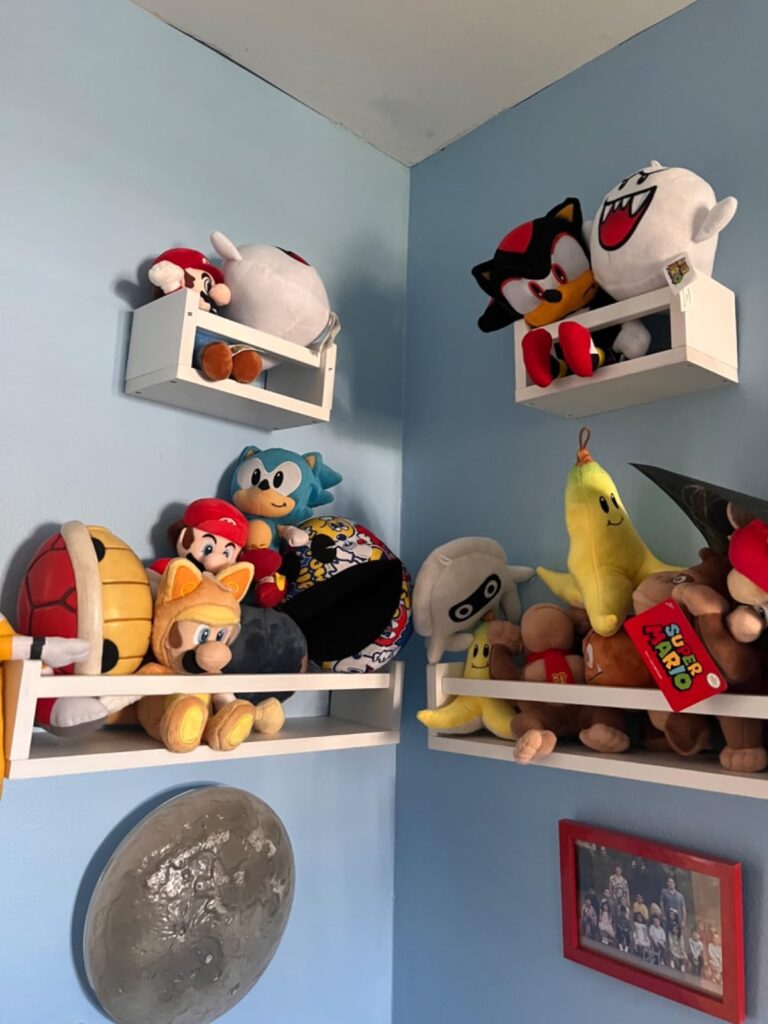
You know that moment when you see a nursery shelf and think, “Wow, how do they make it look that good?” It’s not just luck—it’s layering. Strategic, thoughtful, visual layering that makes every item feel like it belongs without the shelf becoming a clutter magnet.
Let’s break down exactly how to build a beautifully layered, highly functional nursery shelf—starting from the top and working our way down.
🧡 Top Shelf = The Aesthetic Zone
This is your “no-touch” zone. Items placed here should be visually appealing, lightweight, and totally out of baby’s reach.
What to put here:
- Framed quotes or baby’s name sign
- Dried flower arrangements or faux plants
- A decorative keepsake (think: tiny ceramic animal, wooden block letter, or memory box)
Keep it simple and light—both visually and physically. Avoid anything heavy that could fall or look top-heavy. This shelf sets the tone for your nursery’s style, so pick 2–3 items max and give them space to breathe.
💡Pro tip: Use items with varying heights to create a dynamic “visual triangle.” Taller item on one side, shorter on the other, something middle-sized in between.
🤍 Middle Shelf = The Functional Zone
Ah, the MVP of nursery shelving. This is where beauty meets purpose. It’s the shelf you’ll interact with the most, so everything here should serve a daily function and look nice while doing it.
What to put here:
- Baskets or bins with baby care items (lotions, burp cloths, swaddles)
- Diapering essentials if it’s near a changing table
- Pacifier storage or a wipe container in a chic box
The key here is organization disguised as décor. If you’re using bins, go for neutral tones or textures like fabric, rattan, or light wood. Label them if needed, but keep labels subtle and stylish.
💡This is where the Homey Panda nursery shelf truly earns its rep. Its mini shelf format makes this zone foolproof—you can dedicate each compartment to a specific function without it feeling cluttered or chaotic.
🤎 Bottom Shelf = The Baby-Friendly Zone
This is the hands-on shelf. The one your baby will eventually interact with, so make it soft, safe, and simple.
What to put here:
- Board books with colorful covers
- Soft stuffed animals or plush toys
- Wooden sensory toys or teethers
You want this zone to be inviting, not overwhelming. It encourages independence and creates a cute little “grab and play” nook for your baby once they’re mobile.
💬 Real parent tip: “We kept rotating toys here every couple weeks. It kept things fresh for our baby and made cleanup easier since the shelf wasn’t overflowing.”
🪄 The Triangle Method of Shelf Styling
This easy visual trick helps keep your shelf balanced and appealing:
- Choose one tall item
- Choose one medium item
- Choose one low/wide item
Arrange them in a triangular pattern across the shelf space. Your eyes will naturally follow the shape, and it prevents any one item from overpowering the rest. Apply this method to each level (top, middle, bottom) for consistency.
💫 Bonus Layer: The Backdrop
Want to take your nursery shelf to the next level? Add a visual backdrop behind it:
- A painted accent block (think soft arches or rectangles)
- Peel-and-stick wallpaper with subtle patterns
- Name decals or wall art layered behind the shelf
It adds depth and makes the shelf feel like a full design feature—not just something tacked onto the wall.
Layering Recap:
Every shelf has a role. Top = style. Middle = function. Bottom = baby-friendly. When you design with this structure in mind, your nursery shelf becomes not just pretty—but practical. And with a mini shelf setup like the Homey Panda nursery book shelf, layering becomes second nature.
🧼 Clean Shelf, Clear Mind: The Power of Simplicity
Let’s be honest—when you first picture your nursery shelf, it probably involves carefully curated books, cute little knickknacks, and a color scheme Martha Stewart would be proud of. Fast forward a few weeks postpartum, and suddenly the shelf looks like a garage sale exploded on it.
Here’s the truth: simplicity is your secret weapon. A clean, well-organized shelf isn’t just visually appealing—it creates calm. And in a space as emotionally charged and busy as a nursery, calm is everything.
✨ Why Too Many Cute Things = Chaos
It starts innocently. You place a plush bunny here, a rattle there, a tiny wooden rainbow in the corner. But before you know it, you’ve got 13 items competing for attention on one tiny shelf.
The result? Visual noise. And yes, your brain notices.
Too much stuff:
- Makes it harder to find what you need
- Detracts from the items that should stand out
- Adds stress to your already overstimulated environment
When everything is special, nothing feels special. So instead of cramming every adorable baby gift onto your shelf, be intentional. Rotate items. Store extras. Keep your shelf focused and your energy grounded.
🧺 Embracing Negative Space: Let It Breathe
Designers talk about “negative space” like it’s a magic trick—and honestly, it kind of is. Leaving open space around your shelf items makes everything look more polished, more elevated, and more calming.
Try this:
- Pick your top 3 favorite shelf items
- Give them space—a few inches on either side
- Step back and see how they pop
You’ll notice your shelf looks styled, not stuffed.
The Homey Panda nursery shelf really helps here. Because it’s made with mini shelf compartments, it naturally encourages separation. You’re less likely to overfill each section, which keeps the shelf looking clean and intentional.
🪞 Shelf Editing 101: Know What to Remove
Here’s a little exercise: look at your shelf right now (or imagine it if it’s still in progress). Then ask:
- Do I use this item regularly?
- Does it serve a purpose or bring joy?
- Would I miss it if I stored it for a while?
If the answer is no, remove it. It doesn’t have to go forever—just give it a break. This shelf isn’t a permanent exhibit. It’s a living part of your nursery.
Pro tip: Keep a small storage box in the closet labeled “shelf extras.” Rotate items in and out every month to keep the look fresh without buying anything new.
🔁 Keep It Reset-Ready
The simpler your setup, the easier it is to reset when things inevitably get messy. And they will get messy—trust that.
When your shelf only has a few well-chosen items:
- Cleanup takes 60 seconds
- Dusting is a breeze
- Your space always looks “put together” (even if you’re not)
This also makes it easier for partners, babysitters, and grandparents to help—because everything has a place and isn’t buried under shelf clutter.
Simplicity Recap:
Your nursery shelf isn’t a museum—it’s a tool. A vibe. A quiet helper in the background of your wild parenting days. Keep it simple. Let it breathe. And lean into smart solutions like the Homey Panda nursery book shelf, which practically does the editing for you with its organized mini shelf system.
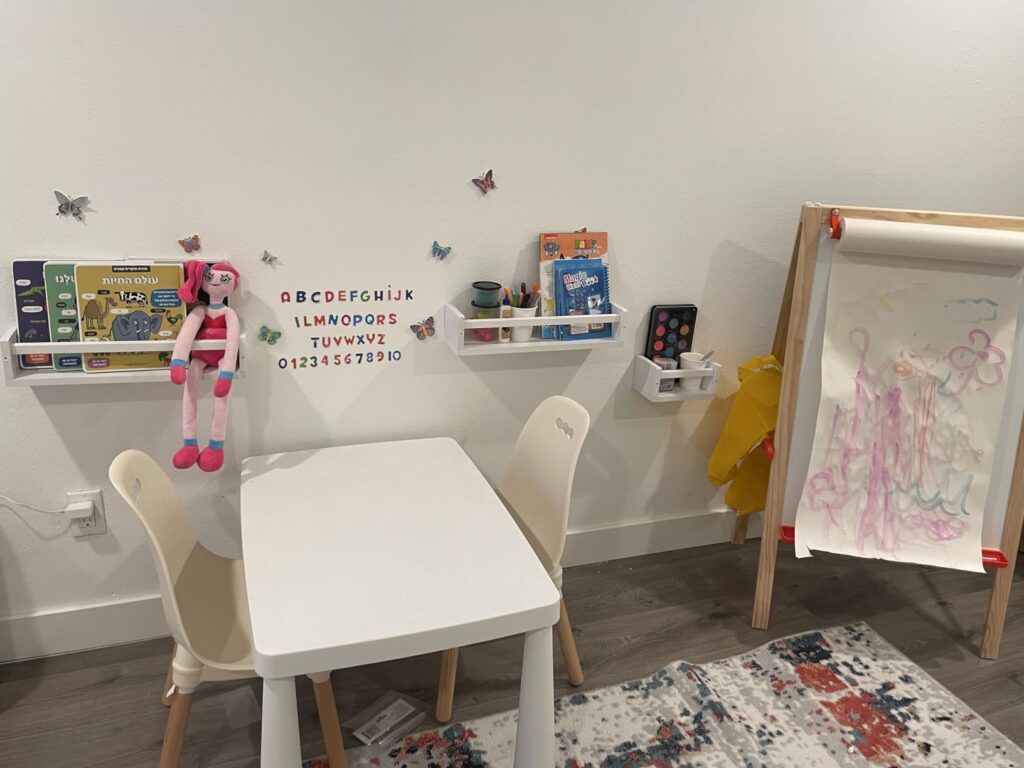
✨ High-Impact, Low-Effort Shelf Styling Tricks
You don’t need to be an interior designer—or have a bottomless budget—to make your nursery shelf look incredible. With just a few smart, easy tweaks, you can take your shelf from “meh” to whoa, is this from a magazine?
Whether you’re refreshing your space or just getting started, these low-effort styling tricks will help your nursery shelf become the quiet star of the room.
🎨 Add a Backdrop: Instant Depth Without Clutter
One of the easiest ways to make your shelf pop? Create contrast between the shelf and the wall behind it.
Try:
- A painted arch or rectangle in a soft pastel behind the shelf
- Peel-and-stick wallpaper panels in a subtle pattern
- Removable decals like stars, clouds, or your baby’s initials
This trick adds visual interest without putting anything else on the shelf. It draws the eye in and makes even a basic setup feel custom.
Pair this with the clean, modular design of the Homey Panda nursery book shelf, and boom—designer vibes, zero stress.
📚 Face Books Forward for Instant Charm
Instead of lining baby books spine-out, display the covers facing forward. They’re colorful, cute, and visually engaging for your little one as they grow.
Use a couple of favorites and rotate them monthly. Bonus points for matching book themes with the season—think snowy bedtime books in winter, animal friends in spring.
The mini shelf sections in the Homey Panda setup are perfect for this. Each book gets its own little spotlight without crowding out the rest of the shelf.
🔆 Add Lighting for Cozy, Magical Feels
A touch of light turns any shelf into a cozy feature.
Simple ideas:
- Stick-on puck lights (battery-powered and easy to install)
- Clip-on fairy lights (warm white, always)
- A mini plug-in picture light above the shelf
This adds a soft glow at night and gives your nursery a gentle ambiance—especially helpful during late-night feeds or diaper changes.
Just make sure any lighting is out of baby’s reach and securely mounted.
🪞 Use Texture to Create Visual Layers
Want your shelf to look styled without adding more “stuff”? Play with textures instead of quantity.
Mix and match:
- Woven baskets
- Soft plush toys
- Smooth wood bookends
- Metallic accents (brushed gold or bronze work well in nurseries)
When you combine different textures, the shelf feels full and intentional—even if you only have a few items on display.
🖼️ Layer Items, Don’t Line Them
Instead of spacing items evenly in a row, try layering:
- Place a small plush toy in front of a framed photo
- Rest a folded muslin blanket over the edge of a bin
- Stack two or three soft baby books with a teether on top
Layering gives depth and that casual, lived-in feel that makes shelves look “styled by a pro” but still cozy and functional.
🏷️ Add a Touch of Personalization
Personal details are the heart of a nursery. Try:
- Wooden name blocks
- A mini chalkboard with your baby’s birth stats
- A framed family photo or a handwritten note from a grandparent
These small additions go a long way in making your shelf feel yours—not just something copied from social media.
And again, with the Homey Panda nursery shelf, each little shelf compartment gives you the perfect place to showcase these meaningful touches.
Styling Recap:
It’s not about how much you add—it’s about how you arrange it. With thoughtful lighting, texture, and just a few personal touches, your nursery shelf can look like you hired a stylist… even if you did it during nap time with one eye open.
🧸 Function That Doesn’t Look Functional (But Is)
Here’s a little parenting truth bomb: the more accessible and organized your nursery essentials are, the less your life falls apart during a midnight diaper blowout. But here’s the plot twist—you don’t have to sacrifice style to make it happen.
You just need to be sneaky about it.
In this section, we’re going to show you how to hide the clutter in plain sight, organize your shelf like a pro, and create a nursery setup that looks stylish—but totally works.
🧺 Use Hidden Storage on Open Shelves
Open shelves can feel like an invitation for mess. But with a few storage tricks, you can keep things looking clean while still packing in all your must-haves.
Try:
- Neutral fabric bins to hold lotions, creams, and pacifiers
- Woven baskets to store burp cloths or washcloths
- Decorative boxes with lids for small odds and ends (think nail clippers, thermometers, travel-size wipes)
These storage containers blend into the décor and let you stash the chaos. No one needs to know there are five pacifiers and a bottle of gripe water inside that adorable little basket.
The Homey Panda nursery shelf, with its signature mini shelf layout, makes this effortless. Each compartment becomes a built-in zone for function that still looks clean and intentional.
🧠 Choose Dual-Purpose Items
Every item on your shelf should do at least one of two things:
- Serve a purpose (storage, access, comfort)
- Bring visual joy (style, sentiment, personalization)
If it doesn’t do either? It doesn’t belong.
Look for dual-purpose nursery items, like:
- A bookend that’s also a nightlight
- A stuffed animal that doubles as a sound machine
- A wooden box that stores baby’s hair accessories or teething rings
These are the quiet heroes of the nursery shelf world—pretty to look at, priceless in function.
🔁 Make the Shelf Work for Your Routine
Don’t just copy a pretty shelf you saw online. Think about what you actually need easy access to, and build around that.
For example:
- Keep a small bin labeled “sleepytime” that holds pacifiers, lotion, and a lavender spray
- Create a “go-to” shelf with items you grab during every diaper change
- Designate one mini shelf for clean bibs and burp cloths so you’re not digging through drawers at 2 a.m.
And again, this is where the Homey Panda nursery book shelf really shines. The divided design makes it so easy to assign zones without turning the whole thing into a giant mess.
🛠️ Use Style to Disguise Function
Want to be next-level about it? Use your shelf’s visual appeal to trick the eye.
Examples:
- Use a pretty jar to hold cotton swabs or baby q-tips
- Tuck diaper cream into a small woven pouch or drawstring bag
- Layer a folded muslin cloth over a storage box to soften the look
When everything has a place—and looks like it belongs—you won’t even notice you’re storing practical items in plain sight.
🪄 Keep It Swappable
Life with a baby changes quickly. What you need on your shelf this month might be completely different next month.
So instead of locking your shelf into a “final” setup, keep it flexible. Use items that are:
- Easy to move
- Quick to swap out
- Versatile in purpose
And because the Homey Panda mini shelves are already pre-divided, you can update one section at a time—no need to tear the whole thing apart. It’s modular living at its finest.
Function Recap:
The best nursery shelves are secretly doing double duty. They look like a dream, but they’re built to make your day-to-day life easier. When form and function meet, parenting feels just a little more under control—and hey, that’s a win.
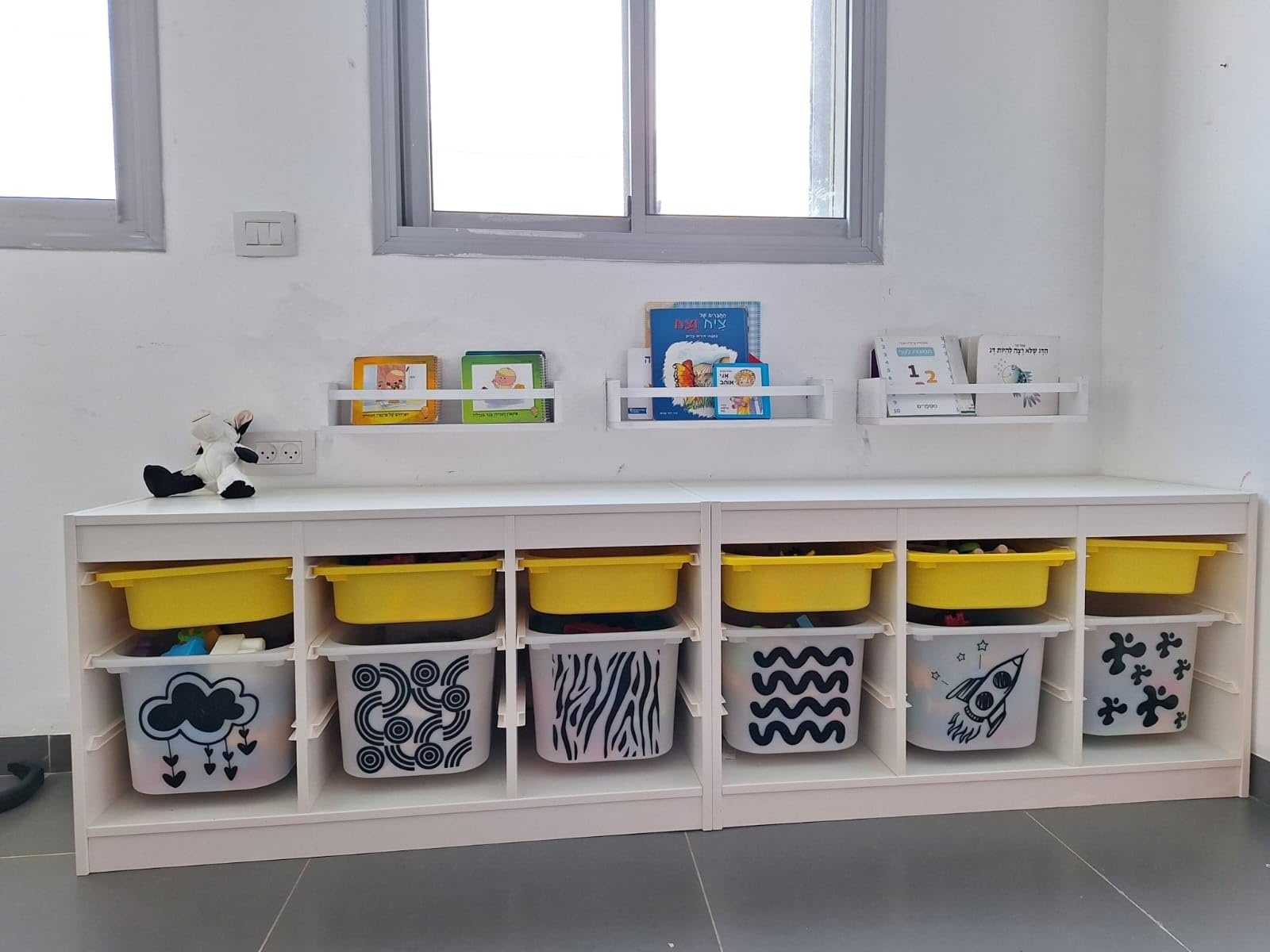
🧠 Creating a Shelf That Grows With Your Child
A lot of nursery setups are built for the now—the burp cloths, the tiny onesies, the swaddle that takes 15 minutes to fold properly. But what about 6 months from now? A year? Three years?
That’s where a future-ready nursery shelf makes all the difference. Designing your shelf with growth in mind saves you from having to redo everything once your baby becomes a book-loving toddler with an opinion about stuffed animal placement.
Let’s walk through exactly how to future-proof your shelf—and how shelves like the Homey Panda nursery book shelf make this transition smooth and stress-free.
📈 Think Beyond the Newborn Phase
Yes, right now your shelf might be holding pacifiers and tiny diapers. But eventually? You’ll be storing:
- Picture books and early readers
- Sippy cups and snack containers
- Art supplies and sticker sheets
- Little collections of rocks, leaves, or who-knows-what
So before you fill your shelf with newborn-only items, leave space for the future. Use versatile storage bins and flexible layouts that allow you to swap items in and out without reworking your entire setup.
The Homey Panda mini shelf design is perfect for this because each section can be reassigned as your child grows. What was once a “diaper zone” becomes a “book nook” with zero stress.
🔁 Plan to Rotate Items Every 3–6 Months
Your baby’s needs evolve quickly. Instead of rebuilding the shelf from scratch each time, schedule small refreshes.
Here’s a simple plan:
- 0–6 months: diapers, wipes, onesies, soothing toys
- 6–12 months: teethers, sensory books, snack cups
- 1–2 years: board books, plush toys, art supplies
- 2–3 years: puzzles, favorite storybooks, early learning toys
Set a reminder in your phone every few months: “Update the shelf.” It’s a small act that keeps your nursery (or toddler room) functional and fresh.
📚 From Nursery Shelf to Toddler Library
Want to raise a little bookworm? It starts with visibility and access. Use the bottom sections of your shelf to store books where your child can grab them independently.
The Homey Panda shelf is a top pick for toddler book displays—its mini compartments are just the right size for forward-facing books. Your toddler can see the covers, choose what they want, and put it back (well… maybe).
This creates an early sense of ownership and encourages a love of reading from the start.
🧒 Encourage Independence Through Design
A smartly arranged shelf empowers your child to:
- Grab their favorite toy on their own
- Put away books without help
- Choose a bedtime story
- Take responsibility for their space
It sounds small, but these tiny steps build confidence. Your shelf becomes part of their growth journey—not just a décor element.
Keep the bottom shelves reserved for soft, safe, and interactive items. As your child grows, slowly add things like flashcards, photo books, or even a small box of “treasures.”
🔄 Refresh the Shelf Seasonally
Make shelf updates a fun tradition. Use the seasons or holidays to guide what you display:
- Spring: bunny books, flower toys, pastel tones
- Summer: beach-themed books, sun hats, sunglasses
- Fall: pumpkins, leaf crafts, cozy textures
- Winter: snowman books, twinkle lights, mittens
It keeps things feeling new and lets you bond over styling together—especially as your child gets older.
Growth Recap:
A nursery shelf that grows with your child isn’t just smart—it’s sustainable. It saves you money, time, and design headaches. And when you’ve got a modular setup like the Homey Panda nursery book shelf, future-proofing becomes practically effortless.
🧠 Final Thoughts: Your Nursery Shelf Is More Than Just Storage
If you’ve made it this far, you’re not just styling a nursery shelf—you’re building something special.
You’re building a space that holds books and bibs, sure—but also memories. You’re carving out a little corner of calm, beauty, and practicality in the middle of all the baby chaos. And you’re doing it in a way that reflects you—your style, your story, and your heart.
From setting intentional shelf goals to layering with purpose, organizing functionally, and rotating with love, you’ve now got all the tools to create a nursery shelf that looks good, works beautifully, and grows with your child.
And if you’re still looking for the perfect shelf to start with? Thousands of parents agree—the Homey Panda nursery book shelf is a game-changer. Its mini shelf layout makes styling and organization so much easier, helping you hit all your nursery goals without sacrificing style or sanity.
👉 Ready for More Nursery Inspo?
Whether you’re still designing your dream nursery or just want to make daily life a little smoother, we’ve got you covered.
✨ Check out more tips, ideas, and expert-backed parenting content on our blog!
Because building a beautiful, functional nursery doesn’t have to be overwhelming. With a little creativity, a solid shelf, and the right mindset—you’ve got this. 💛

